 W
WA shield-maiden was a female warrior from Scandinavian folklore and mythology.
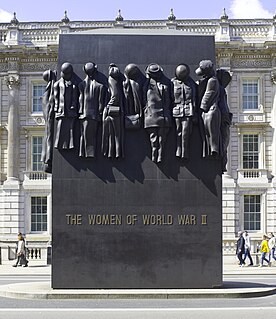 W
WThe Monument to the Women of World War II is a British national war memorial situated on Whitehall in London, to the north of the Cenotaph. It was sculpted by John W. Mills, unveiled by Queen Elizabeth II and dedicated by Baroness Boothroyd in July 2005.
 W
WPrincess Alice of the United Kingdom was the Grand Duchess of Hesse and by Rhine from 1877 to 1878. She was the third child and second daughter of Queen Victoria and Prince Albert, by virtue of which she was related to many notable monarchs throughout Europe. Alice was the first of Queen Victoria's nine children to die, and one of three to be outlived by their mother, who died in 1901. Her life had been enwrapped in tragedy since her father's death in 1861.
 W
WLuise Aston, or Louise Aston, was a German author and feminist, who championed the rights of women, and was known for dressing in male attire. She was an advocate of democracy, free love, and sexuality.
 W
WOlha Basarab was a Ukrainian political activist and member of the Ukrainian Military Organization who conducted both charitable and humanitarian work that was recognized by the International Red Cross, as well as military or intelligence work on behalf of the Ukrainian underground. She was an executive of the Ukrainian Women's Union branch in Lviv Ukraine. She was arrested by the Polish police after being accused of working with the Ukrainian Military Organization and of spying for Germany. Materials indicating cooperation with Germany's intelligence were found at her home. Different accounts of her death in prison exist range from suicide to murder. Afterwards she was seen as a martyr and source of inspiration within the Ukrainian community.
 W
WVilma Beck (1810-1851), was a Hungarian writer and freedom fighter in the Hungarian Revolution of 1848.
 W
WTatiana Evgenievna Botkina-Melnik (1898–1986) was the daughter of court physician Eugene Botkin, who was killed along with Tsar Nicholas II and his family by the Bolsheviks on July 17, 1918.
 W
WJean Cameron of Glendessary was a member of the Scottish gentry and a Jacobite. She may have been briefly involved in the Jacobite rising of 1745, during which the Stuart heir Charles Edward attempted to reclaim the British throne for his father.
 W
WAnna Colbjørnsdatter Arneberg (1667–1736) was a Norwegian national heroine who was most known for her participation in the Battle of Norderhov during the Great Northern War.
 W
WDarya Lavrentyevna Mikhailova was a Russian nurse during the siege of Sevastopol in the Crimean War, from which she became better known by the name Dasha of Sevastopol. She was one of the founders of modern nursing with Florence Nightingale.
 W
WJuliette Dodu was a legendary heroine of the Franco-Prussian War of 1870, and the first woman to be awarded the Legion of Honor. However, many doubts have been raised about her actions during the war, and her story remains controversial.
 W
WMary Hay, 14th Countess of Erroll was a Scottish noblewoman and suo jure Countess of Erroll. As 18th Hereditary Lord High Constable and Knight Marischal of Scotland, she was the Senior Great Officer among the Royal Officers of Scotland and Chief of the King's Household in Scotland. She inherited these titles in 1717 on the death of her unmarried brother, Charles Hay, 13th Earl of Erroll.
 W
WRuth Stanley Farnam was an American nurse, soldier and writer. She is the only American woman known to have served as a soldier in the Serbian army during World War I.
 W
WLady Mackintosh (1723–1784) was a Scottish Jacobite of the Clan Farquharson, a Scottish clan of the Scottish Highlands and also the wife of Angus Mackintosh, chief of the Clan Mackintosh.
 W
WMairéad Farrell was a member of the Provisional Irish Republican Army (IRA). She was shot dead by the British Army in Gibraltar on 6 March 1988.
 W
WAna Maria de Jesus Ribeiro da Silva, best known as Anita Garibaldi, was the Brazilian wife and comrade-in-arms of Italian revolutionary Giuseppe Garibaldi. Their partnership epitomized the spirit of the 19th century's Age of Romanticism and revolutionary liberalism.
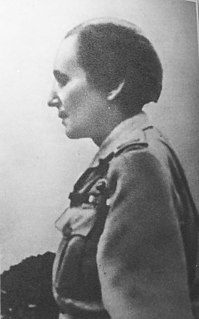 W
WMajor Wanda Gertz was a Polish woman of noble birth, who began her military career in the Polish Legion during World War I, dressed as a man, under the pseudonym of "Kazimierz 'Kazik' Żuchowicz". She subsequently served in the Ochotnicza Legia Kobiet of the Polish Armed Forces during the Polish–Soviet War. In the interwar period she became a reserve officer but faced discrimination and was stripped of her officer rank. She worked closely with Marshal Piłsudski and remained an activist in the cause of women in the military.
 W
WAnna Isabella Gonzaga, was a Duchess consort of Mantua and Montferrat and heir of the Duchy of Guastalla, including Luzzara and Reggiolo; married in 1671 to Ferdinando Carlo Gonzaga, Duke of Mantua and Montferrat. She was the regent of Mantua during the War of the Spanish Succession.
 W
WKari Rasmusdatter Hiran, was a Norwegian farmer and war heroine. She is known for her act during the invasion of Norway by Charles XII of Sweden during the Great Northern War in 1716. She gave the Swedish army false information about the size and plans of the Norwegian army, which evidently caused the Swedish monarch to interrupt his attempt to conquer Norway and return to Sweden. A memorial stone was raised for her in 1956.
 W
WJulia Selina, Lady Inglis was the daughter of Frederic Thesiger, 1st Baron Chelmsford, and wife of Major-General Sir John Eardley Inglis, who commanded the British troops at the Siege of Lucknow in 1857. She kept a diary of her life during the siege, which was published as The Siege of Lucknow: a Diary. She aimed to give "a simple account of each day's events (which) may give a clear idea of what was done by the garrison under command".
 W
WCountess Karolina Maria Adelajda Franciszka Ksawera Małgorzata Edina Lanckorońska was a Polish noble, World War II resistance fighter, philanthropist, and historian.
 W
WMária Lebstück, was a Hussar officer during the Hungarian War of Independence of 1848 and 1849 under the name Károly Lebstück. She was the first woman to have been officer of the Hussar.
 W
WTeresa Łubieńska, née Skarżyńska, a Polish countess, was a social activist, resistance fighter – lieutenant in the Polish Underground Army – and survivor of two Nazi concentration camps. After World War II, she settled in England, where she worked on behalf of Nazi camp survivors. In May 1957 she was the victim of an unprovoked and fatal stabbing at London's Gloucester Road tube station. The assailant was never traced.
 W
WAnna Lühring was a soldier in the Prussian army during the Napoleonic Wars.
 W
WFlora MacDonald ; was a member of the Macdonalds of Sleat, who helped Charles Edward Stuart evade government troops after the Battle of Culloden in April 1746. Her family supported the government during the 1745 Rising and Flora later claimed to have assisted Charles out of sympathy for his situation.
 W
WIsabel Madeira was a Portuguese soldier, known for her participation in the defence of Portuguese Diu in India during the siege of 1546. She was the captain of a battalion of female combatants.
 W
WJessie White Mario was an English writer and philanthropist. She is sometimes referred to as "Hurricane Jessie" in the Italian press.
 W
WJeanne Merkus, was a Dutch deaconess, guerilla soldier, and political activist.
 W
WNene Hatun was a Turkish folk heroine, who became known for fighting against Russian forces during the recapture of Fort Aziziye in Erzurum from Russian forces at the start of the Russo-Turkish War of 1877–1878.
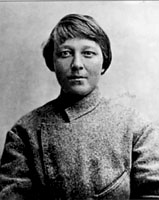 W
WMaria Grigor'evna Nikiforova, was an anarchist partisan leader. A self-described terrorist from the age of 16, she was known widely by her nickname, Marusya. Through her exploits she became a renowned figure in the anarchist movement of 1918–1919 in Ukraine during Russian Civil War.
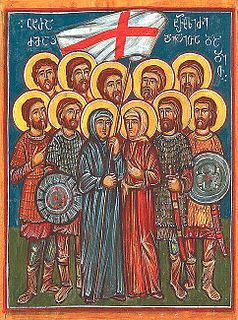 W
WNine Brothers Kherkheulidze with their mother and sister were heroes of the Battle of Marabda. All of them died defending their motherland.
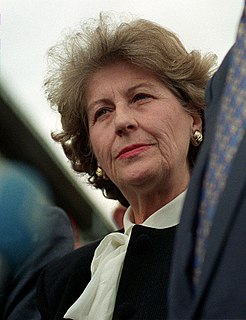 W
WBiljana Plavšić is a Bosnian Serb convicted war criminal and retired politician who served as president of Republika Srpska. She was indicted in 2001 by the International Criminal Tribunal for the former Yugoslavia (ICTY) for war crimes committed during the Bosnian War. She plea-bargained with the ICTY and was sentenced to 11 years in prison in 2003, to be served in a Swedish prison.
 W
WPrillar-Guri or Prillarguri is a semi legendary figure who according to oral tradition was a woman from Sel, Norway who played a key role in the Battle of Kringen in August 1612.
 W
WMarion Philippina Pritchard was a Dutch-American social worker and psychoanalyst, who distinguished herself as a saviour of Jews in the Netherlands during the Second World War. Pritchard helped save approximately 150 Dutch Jews, most of them children, throughout the German occupation of the Netherlands. In addition to protecting these peoples lives, she was imprisoned by Nazis, worked in collaboration with the Dutch resistance, and shot dead a known Dutch informer to the Nazis to save Dutch Jewish children.
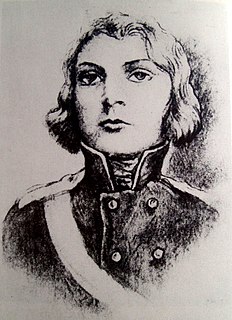 W
WMarie Christiane Eleonore Prochaska was a German woman soldier who fought in the Prussian army against Napoleon during the War of the Sixth Coalition.
 W
WAnna Henryka Pustowójtówna was a Polish activist and soldier, famed for her participation in the January Uprising.
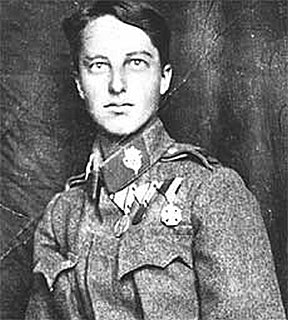 W
WViktoria Savs served in the Austro-Hungarian Army during the First World War disguised as a man. She was one of two known female soldiers on the Austrian front lines. She served with the knowledge of her superiors, but virtually unrecognized as a woman, on the Dolomite front from 1915 to 1917. After a severe injury in May 1917, she was hospitalized, and her biological sex was discovered, ending her military career. She was awarded several medals for her dedication and bravery. She was known as the "Heroine of the Drei Zinnen."
 W
WFranziska Scanagatta was an Italian woman who disguised herself as a man in order to attend an Austrian officer school in 1794. She served during the French Revolution and was promoted to Leutnant (lieutenant) in 1800. In 1801 she left the army and was granted a pension by Kaiser Franz II, when he learned of her story.
 W
WIrena Stanisława Sendler (née Krzyżanowska), also referred to as Irena Sendlerowa in Poland, nom de guerre Jolanta, was a Polish humanitarian, social worker, and nurse who served in the Polish Underground Resistance during World War II in German-occupied Warsaw. From October 1943 she was head of the children's section of Żegota, the Polish Council to Aid Jews.
 W
WSibylle of Cleves was electress consort of Saxony.
 W
WMaria Krystyna Janina Skarbek,, also known as Christine Granville, was a Polish agent of the British Special Operations Executive (SOE) during the Second World War. She became celebrated for her daring exploits in intelligence and irregular-warfare missions in Nazi-occupied Poland and France. Journalist Alistair Horne, who described himself in 2012 as one of the few people still alive who had known Skarbek, described her as the "bravest of the brave." Spymaster Vera Atkins of the SOE described Skarbek as "very brave, very attractive, but a loner and a law unto herself."
 W
WMary Anne Talbot also known as John Taylor was an Englishwoman who wore male dress and became a soldier and sailor during the French Revolutionary Wars.
 W
WVivandière or cantinière is a French name for women attached to military regiments as sutlers or canteen keepers. Their actual historic function of selling wine to the troops and working in canteens led to the adoption of the name 'cantinière' which came to supplant the original 'vivandière' starting in 1793, but the use of both terms was common in French until the mid-19th century, and 'vivandière' remained the term of choice in non-French-speaking countries such as the US, Spain, Italy, and Great Britain. Vivandières served in the French army up until the beginning of World War I, but the custom spread to many other armies. Vivandières also served on both sides in the American Civil War, and in the armies of Spain, Italy, the German states, Switzerland, and various armies in South America, though little is known about the details in most of those cases as historians have not done extensive research on them.
 W
WJane Neville, Countess of Westmorland, was an English noblewoman.
 W
WMaria Wittek, Poland. She served in the Polish Army and associated organizations from the age of 18 and, following her retirement, became the first Polish woman to be promoted to Brigadier-General in 1991.
 W
WMária Wittner is a Hungarian revolutionary and politician who participated in the Hungarian Revolution of 1956.
 W
WLt. Col. Aleksandra Zagórska, firstly, Bitschan, secondly, Zagórska, aka Aleksandra Bednarz – was a Lieutenant Colonel in the Polish Armed Forces, a soldier in the Legions, organizer and commandant of the Ochotnicza Legia Kobiet and an independence activist.
 W
WNatalia Zarembina nee Lipszyc - Polish writer and journalist, activist of the Polish Socialist Party – Freedom, Equality, Independence, Council for Aid to Jews, participant of the underground in occupied Poland.
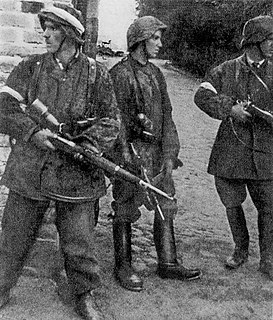 W
WElżbieta Zawacka, known also by her war-time nom de guerre Zo, was a Polish university professor, scouting instructor, SOE agent and a freedom fighter during World War II. She was also a Brigadier General of the Polish Army, promoted by President Lech Kaczyński on 3 May 2006. The only woman among the Cichociemni, she served as a courier for the Home Army, carrying letters and other documents from Nazi-occupied Poland to the Polish government in exile and back. Her regular route ran from Warsaw through Berlin and Sweden to London. She was also responsible for organizing routes for other couriers of the Home Army.
 W
WCountess Ilona Zrínyi was a noblewoman and heroine. She was one of the last surviving members of the Croatian-Hungarian Zrinski/Zrínyi noble family. She was the daughter of Petar Zrinski, Ban (viceroy) of Croatia, the niece of both Miklós Zrínyi and Fran Krsto Frankopan and the wife of Francis Rákóczi I and Imre Thököly, as well as the mother of Francis Rákóczi II. She is remembered in history for her Defense of Palanok Castle against the Imperial army in 1685-1688, an act for which she was regarded a heroine in Hungary.